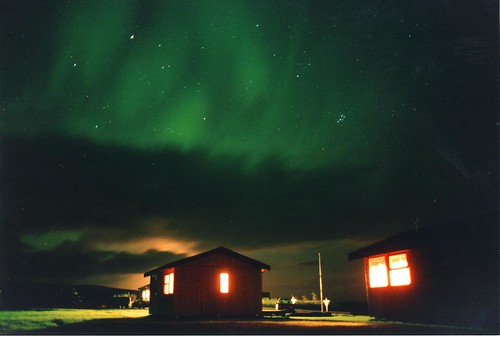Seth Anderson at B12 Solipsism has an excellent series of posts (
here,
here, and
here) about the intersection of the new online/sharing culture, copyright, and photography.
The first post is about the issue of copyright and fair use--many people fail to understand that "fair use" means you have already violated copyright, but you have a valid legal excuse. In photography, Seth points out that the ability to take an excerpt is potentially not possible, leaving every use of a photograph without permission a copyright violation.
The second post is a dust-up by a writer for the New York Times, who argued it was okay to print out a copy of any Flickr photograph and put it up in your private residence. This did not go over well with people who create--i.e., the photographers. While it may be ok for certain Creative Commons and Public Domain photographs, it is a violation of copyright to do that to a owned photograph. The legal question is, as I mentioned above, is this use considered Fair? You would be surprised at the muddled mess in the case law. A professor for instance lost a copyright case because he made personal copies of many science papers and kept them in his office. The turning distinction on that case was the amount of papers he made copies of that drove the copyright violation from "fair use" to a civil violation. Is one printed photo fair use? What if you decorate your whole apartment with them? What size can your print fairly? What about your friends' apartments?
The issues are completely muddy and complex--as a photographer, for instance, I feel I should be compensated for my work. Websites like say
Chicagoist or
Treehugger use flickr CC shared images to illustrate their stories. In the traditional media, the photographer would be compensated for their work, either by being employed or by a fee. This is not being done at all for most of the non-traditional sites on the internet. It is also a truth that these sites probably couldn't afford the going rate for photographs. Getting your image out for people to see for a photographer is a very important thing, but is it driving the image creation business out of a profession and into the hands of casual photographers? (The latin term amateur is perfect for here but misused--these photographers love what they do and are often just as good as a pro, but the amateurs are not paid).
You would be surprised what it costs to get the rights to every photograph in a magazine. Years ago I was paid once for an image covering less than 1/4 of a page in a small publication more than it costs for ten years of Flickr Pro. More recently, if someone can't get the image use for free, they move on to find another CC licensed image. At what point do I give away my images? For specific charity non-profits? For non-profits? The National Geographic Society is a non-profit, should they get images for free? For school textbooks? For medical school textbooks? There are no good answers, except I am sure there will be fewer pro photographers out there in the future.
There is also the new culture driven out of the Free Software/File Sharing culture where the belief is all content is free and the driving force behind creation of works is not the desire to make money; if you make money you have to find a way to do it selling something tangible, whether it be technical support, concerts, or physical items. This belief is moving beyond the software paradigm, is being fought in the music and movie industries (and being lost completely by the industries), and now is moving into books, photography, and other creative markets.
Google was asking illustrators to create for free custom themes for the search engine. Google, a company with a 134
Billion market capitalization, was asking artists to work for free.
I benefit from many of these changes. I listen to music online (and I also still buy CDs, old fashioned me). I work in a field that utilizes free software every day. It is conflicting internally to know that somewhere an artisan may end their craft because they cannot afford to continue, because I chose the free option. I also know there are things I cannot do unless the cost is cheap enough for me to afford. For me, much work remains to allow the creative domains and artists the ability to ply their crafts in the future. I do not know how to get there from here.
